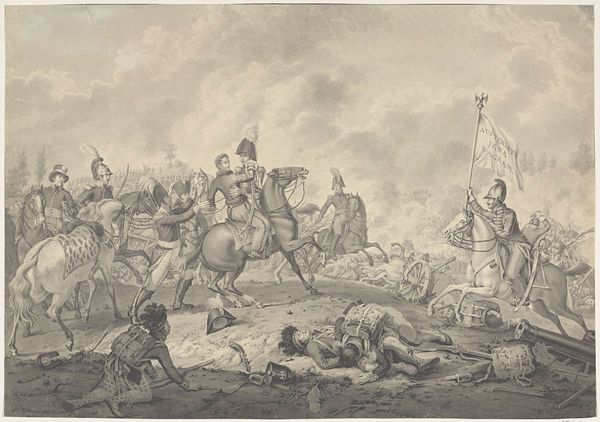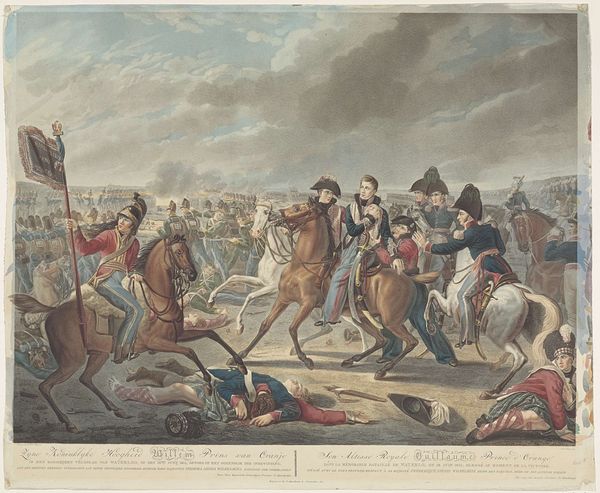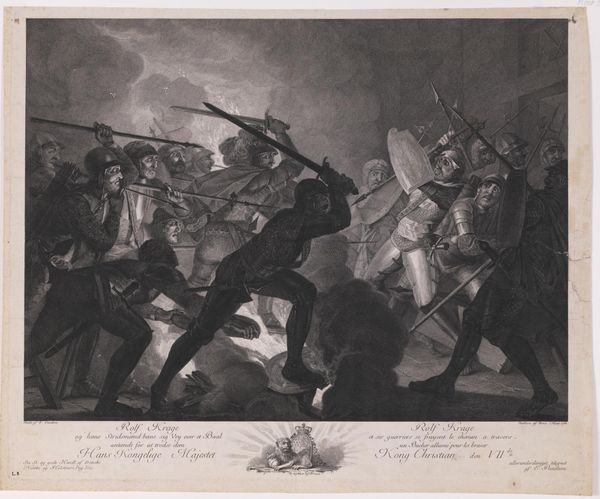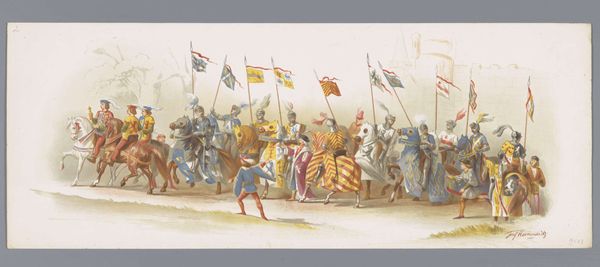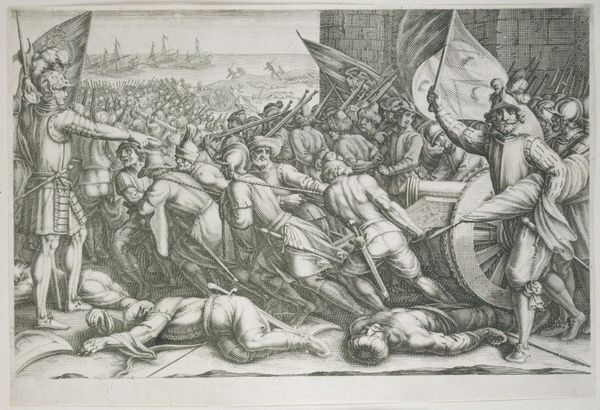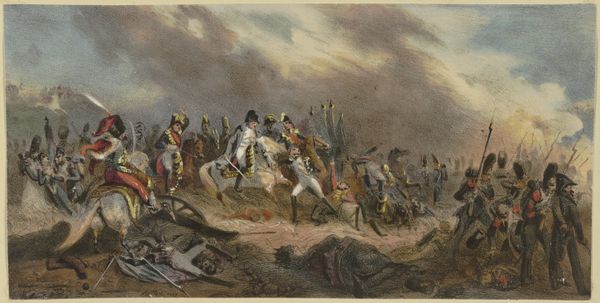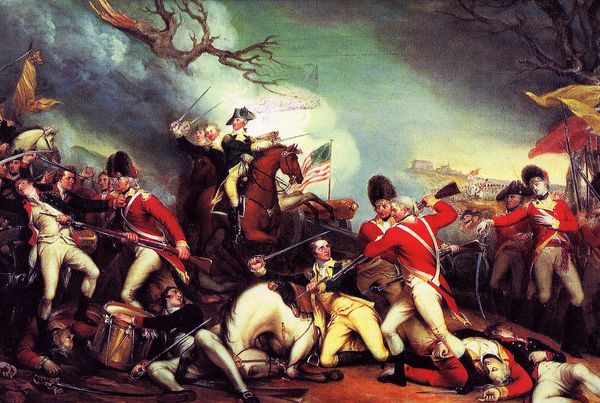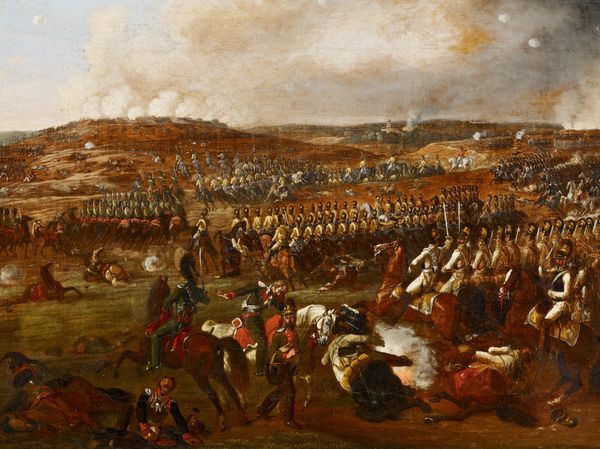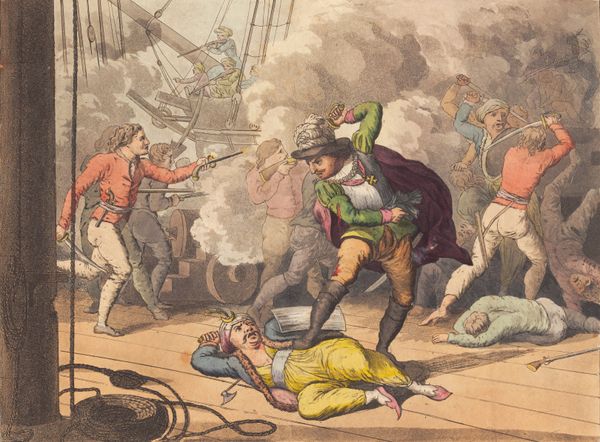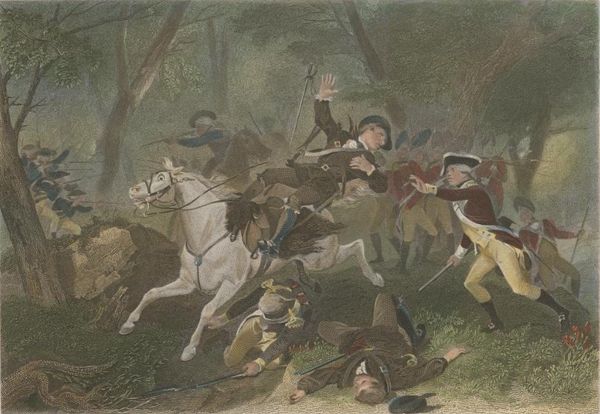
Copyright: Public Domain
Editor: Here we have “Wellington & Blugher,” a woven textile piece from between 1875 and 1900, currently residing at the Art Institute of Chicago and attributed to Thomas Stevens. The depiction of battle seems very classical to me, a bit romantic. What can you tell me about it? Curator: Well, considering it’s a textile depicting such a scene, I’m drawn to consider its means of production. These commemorative textiles were widely produced in the late 19th century using mechanized looms, essentially mass-producing "art" for a wider audience. This contrasts sharply with earlier tapestries commissioned by the elite, placing this piece in a completely different economic and social sphere. Editor: So you're saying the material itself challenges the notion of "high art" and its exclusivity? Curator: Exactly! And not only does it challenge those conventions but looking at the condition of the piece and understanding its accessibility reveals its role. How has this work been used or interpreted over the years? Editor: That’s a very good point. The relative ease with which something like this could be produced raises questions about how it was received. Did these items hold as much prestige or honor the event in the same way paintings did? Curator: The very fact that this scene of military might, usually rendered in oil on a large canvas, is presented instead through weaving, which traditionally has feminine associations. Doesn't this undermine notions of bravery or celebrate industry and manufacture instead? Editor: That really changes how I view the entire composition. I initially focused on the generals and their horses, the sort of heroic narrative…but it all becomes less central now that I’m thinking about textile production and distribution! Thank you. Curator: Of course. Examining the materials and the means of production encourages us to consider how meaning is created and distributed in the art world, disrupting long-held assumptions and expectations.
Comments
No comments
Be the first to comment and join the conversation on the ultimate creative platform.
